Written By: Christopher Tiran (and 5 other contributors)
Difficulty
Easy
Steps
14
Time Required
10 - 15 minutes
Sections
1
Flags
0
Do you have a flat tire, but don't have the time nor the strength to fill up your tires with a standard pump? Using a CO2 Cartridge is a quick and easy way to re-inflate your tires without much work compared to pumping tires full of air.
No parts specified.
Removing the rear wheel of a road bike, generally, is quite easy, but it can be messy if the bike chain has excessive grease.
Figure out which tire is flat. In this case, the rear wheel is flat.
Edit
Edit
Disengage the quick-release lever to loosen the wheel.
Turn the quick-release lever a few times while you hold the cap on the opposite side of the wheel.
Don't unscrew the lever or cap too much or else a spring will pop out.
If the spring comes out, place the spring back on the bar and tighten the cap or lever.
Edit
Pull the wheel out.
Pull the rear shifter into a straight line so the wheel will be able to slide out smoothly.
Pull out the wheel with one hand while you hold the rear shifter.
Be cautious with the rear shifter.
Edit
Now that the rear wheel is off the bike, use the tire lever to get under the tire.
Once the tire lever is under the tire, bring it around the rim of the wheel slowly sliding the tire off wheel.
Ideally, three tire levers are used to get the tire off. However, one tire lever has proven to be sufficient.
However, one tire lever has proven to be sufficient.
Edit
Edit
Place the inner tube back inside the tire.
Put the valve into the hole first, then bring the inner tube around the rim of the wheel.
Using the tire lever, pry the tire back onto the wheel.
Edit
Press the CO2 cartridge towards the rim of the wheel.
The inner tube inflates quickly, so hold the CO2 cartridge for a short period of time.
The valve might freeze while doing this, but this is normal
Edit
Tighten the quick-release lever and close it.
Twist the lever as you hold the cap on the opposite side as tight as possible.
Re-engage the brakes.
Turn the grey lever downwards on the brake, such as in step 2.
Edit
Pedal a little while the bike is lifted slightly off the ground to move the chain back into place.
The chain was placed on a different chain ring when the rear tire was pulled out, so it needs to readjust.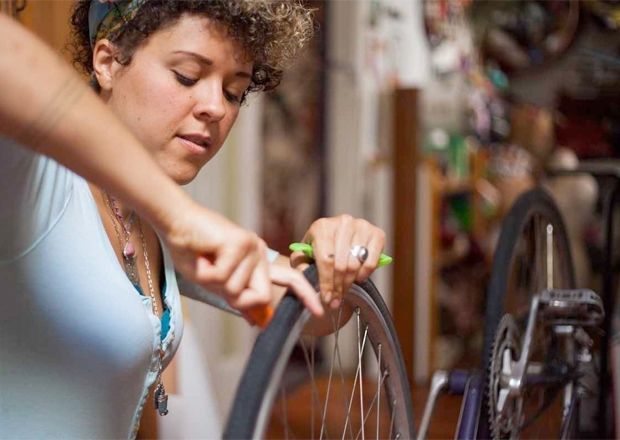
Edit
Almost done!
Once you're able to place the tire back in place and inflate the tire using the CO2 Cartridge, you're ready to keep riding!
Conclusion
Once you're able to place the tire back in place and inflate the tire using the CO2 Cartridge, you're ready to keep riding!
Cancel: I did not complete this guide.
2 other people completed this guide.
with 5 other contributors
Badges: 6
+3 more badges
By Jim Langley
Not long ago, when we were discussing frame pumps and CO2 cartridges, RBR Editor John Marsh shared this ride story with me.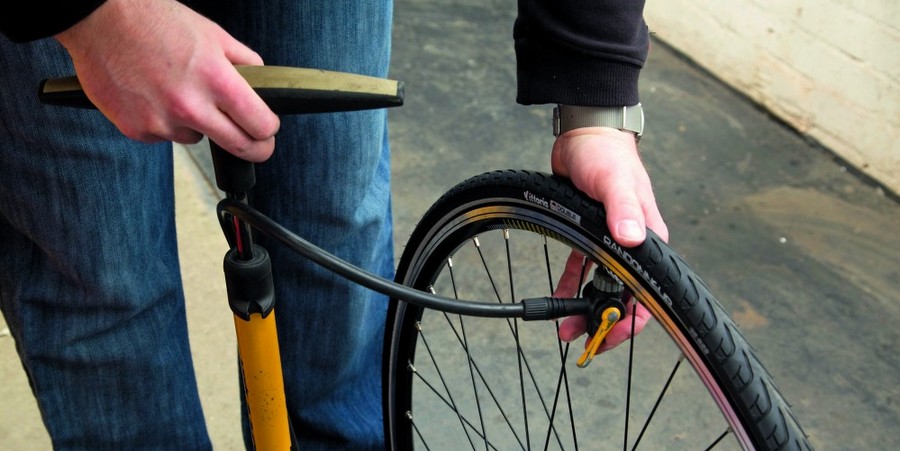 Perhaps something similar has happened to you:
Perhaps something similar has happened to you:
“I was with a buddy recently who seemed to have never used his CO2 system before (or I guess it had been so long he had totally forgotten how).
“When it came time to inflate his fixed flat, he actually still had an old, used CO2 canister attached to the chuck – and didn’t really know how to use the chuck, either. He actually cut his hand in the process and froze the chuck onto the canister (which might have explained why the old one was there in the first place!). This is a very experienced rider, BTW.
“The result was that I had a full 10 minutes of standing there holding my buddy’s bike up as he fiddled with the wheel and tire, trying to air it! Let’s offer some tips to help roadies choose and use a good CO2 inflator – and emphasize the importance of knowing how it works before they need it!”
Great idea, John. First, I’ll explain what CO2 inflators are and why they’re so popular, and then offer some tips, including yours.
Well, a CO2 inflator isn’t really an air compressor, because it doesn’t have a pumping mechanism to compress and store air. But it does inflate tires in a jiffy with a powerful burst of compressed carbon dioxide gas. So no pumping is involved. You just connect the CO2 inflator to the valve, release the CO2 and, almost immediately, the tire is fully inflated.
CO2 inflators depend on small metal canisters (also called cartridges) filled with compressed CO2. You want to be sure to get the right size cartridge for your tire size. Smaller ones will fill a single road tire. The larger ones can fill two tires. When emptied, the cartridges are not refillable. Instead, you recycle them and buy more.
Advantages of CO2 vs. PumpsUnlike most manual pumps that are carried in holders next to your frame, CO2 inflators with the cartridges are so small you can easily carry them in a seat bag, pocket or pack. So they’re ideal if you’ve got a road bike you can’t fit a pump on – or don’t want to put a pump on for whatever reason.
So they’re ideal if you’ve got a road bike you can’t fit a pump on – or don’t want to put a pump on for whatever reason.
When you have a good CO2 inflator and know how to use it, you can fix a flat a lot faster than someone with a standard hand pump. So, CO2 is great for events and races where every second counts.
Disadvantages of CO2For shortcomings, the CO2 cartridges are not free, and every time you run out, you need to buy more. Checking a few sources, it looks like the size to inflate a single road tire runs about $3 each.
Also, as John described, CO2 inflators can be a little trickier to use than simple hand pumps. The freezing issue he mentioned is because as the CO2 gas rushes into the tire, the gas becomes ice cold. This can freeze everything the gas touches, causing the cartridge freezing to the pump head and to metal tube valves, too.
Another issue is that the CO2’s speedy inflation can blow a tire off the rim if the tire or tube wasn’t installed correctly. For example, if you rush to fix a flat you might not quite seat the tire on the rim. A common mistake is to have a section of tube trapped beneath the tire bead.
For example, if you rush to fix a flat you might not quite seat the tire on the rim. A common mistake is to have a section of tube trapped beneath the tire bead.
In that scenario, if you used a CO2 to inflate the tire, the tube would likely lift the bead of the tire, expand past the tire and rim and explode spectacularly. And because the CO2 inflates so fast, it would happen so quickly you wouldn’t be able to stop it. I’ve heard the sound likened to a rifle shot.
CO2 bike tire inflation tipsNow that you know what can go wrong, here are a few tips for avoiding trouble and getting the best performance from a CO2 inflator.
In our conversation, John mentioned that he’s a long-time CO2 user, and he noted that the variety of inflators can cause problems. I’ll turn it over to him to offer a couple of tips:
“All of the inflators work differently,” he said. “I’ve had some that are not nearly as intuitive or easy to use as others. That’s why I finally settled on the easiest possible (and smallest!) chuck.
“It simply screws onto the threads of the CO2 canister. Screw it all the way in to puncture the canister top, then unscrew to let the CO2 flow out and inflate the tire. Screw back in to stop the flow. There’s no valve or anything to understand or operate.
“The key – no matter what you use – is to know exactly how to use it on the road. This takes practice using it while safely at home – even if it costs you a couple CO2 cartridges.”
Here’s an example of the type of CO2 inflator John uses, Genuine Innovations’ Microflate Nano.
I recommend buying spare cartridges so you always have some on hand and never discover you don’t have any on the morning of a big ride. Most riders who use CO2 always carry two cartridges (at least) on most rides.
To ensure that you never blow a tire off the rim with a CO2 inflator, check carefully after you’ve fixed a flat that the tube is fully tucked up inside the tire and that the beads of the tire are seated down inside the rim (the beads are the two rounded edges on both sides of the tire casing).
Freezing CO2 is more problematic when it’s cold outside. If it’s not very cold, it shouldn’t take too long for the metal parts to thaw, then you can separate them. Or wait a bit for the parts to thaw and then douse them with water from your bottle, which should be warm enough to thaw them faster.
Last tip! Since I still see spent CO2 cartridges tossed roadside – please remember after fixing a flat to tuck the empty canister away, bring it home and recycle it.
If you’re a CO2 user please share your best pros, cons and tips in the comments below.
4.5/5 - (2 votes)
It may be elementary, but being able to inflate bike tires is an essential skill for any cyclist.
Many of you already know how to do this, but for those who don't, the different types of valves, pumps, and more importantly, how much pressure to inflate your tire can be a little overwhelming. Let us help you through this process.
Let us help you through this process.
Contents
Pneumatic tires were invented to overcome the harsh "ride quality" of massive wheels.
The air inside acts like a spring, giving you suspension and allowing the tire to adapt to the terrain for better traction.
Tire inflation is a quick job that can easily improve your driving pleasure. Incorrect tire pressure will adversely affect cycling and make it more prone to punctures.
If you've never repaired a puncture before, you may not have thought about how your tires hold air in.
The vast majority of bikes will use a tube. It's a donut-shaped airtight tube that sits inside the tire with the inflation valve you see on the outside.
Inflated tire rests on the ground and provides puncture protection.
You may have heard of tubeless tires which do not have a tube but use a special rim and tire to seal air without using a tube. This usually requires a tubeless sealant, which is a liquid that plugs any air outlets.
This usually requires a tubeless sealant, which is a liquid that plugs any air outlets.
Tubeless tires are more commonly used on mountain bikes, but the technology is moving to road bikes.
Tubeless sealant also seals punctures, and no tube means much less risk of pinching flats - that's when your inner tube gets pinched by the rim, causing a puncture. Thus, tubeless tires can run at lower pressures than inner tube tires to improve comfort, speed, and traction.
At the highest level, you also get tubular tires. They are essentially a tire with a tube built into it, but they are rarely seen or used outside of professional racing.
Inflating tires to the correct pressure is an important part of bike maintenance.
Running tires at too high or too low pressure can be potentially dangerous and can also affect your bike's handling.
Later we will discuss the correct pressure, but for now let's look at possible problems.
An under-inflated tire will reduce your efficiency and leave you vulnerable to annoying punctures.
If you drive with tires at too low pressure, the tire may wear out prematurely. Excessive sidewall deflection can lead to carcass cracking and tire brittleness. This can eventually lead to tire blowout.
Excessively low pressure also increases your susceptibility to punctures and can even cause your tires to literally jump off the rim if you turn at speed (the pressure inside is what keeps your tire on the rim).
Damage can also be caused by tire deflection up to the rim. This can lead to dents or cracks, which can compromise your wheel and require a costly replacement.
Conversely, too high pressure can cause the tire to come off the rim with explosive consequences. This pressure can also compress the wheel because if it is too high, the compressive force on the wheel can be too great.
From a drivability point of view, low pressure can lead to poor drivability due to the tire squirming under load. Your bike will be difficult to control and will be slow and sluggish.
Your bike will be difficult to control and will be slow and sluggish.
On the other hand, too much pressure can lead to poor traction and a rough ride, leading to fatigue and in turn poor handling.
There are two possible reasons for your flat tire. Either you have a puncture or your tire has deflated over time.
The adhesiveless patches are great for a quick fix, while the more traditional kit is a versatile option when you have a bit more time.
All tire systems will bleed slowly because the tubes are not completely sealed. For example, standard butyl tubing retains air fairly well compared to lightweight latex tubing, which bleeds relatively faster. Even tubeless setups will slowly leak air.
Old tubes will pass more air than new ones, so if they haven't been replaced in a while, it's worth taking a look at them. It is less likely, but also possible (especially on older tubes), that the valve is no longer sealing properly.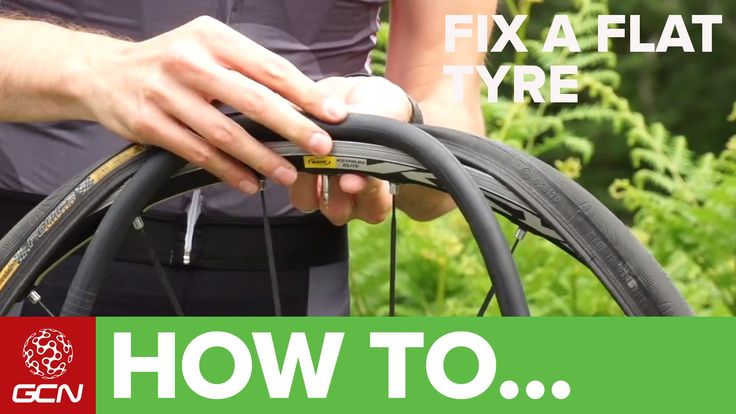
The best way to check what's going on is to try pumping up the tire. If it's holding air, you probably have nothing else to do. If this does not happen, most likely you have a puncture.
If air leaks slowly overnight, you have a slow puncture or just an old tube that needs to be replaced.
The first thing you need to know before inflating a tire is the valve type.
The valve is the key part that keeps the air in the tire but also allows the tire to be inflated (or deflated).
Schrader valve also used for car tires.
Schrader valves are more commonly found on low end bikes and, in the past, mountain bikes. The same valves are used on car tires.
The valve assembly is a hollow tube with a spring loaded valve that automatically closes and screws into the outer housing. The pin comes out of the valve and is usually flush with the end of the outer tube. This pin can be pressed to release air.
This pin can be pressed to release air.
The dust cap on Schrader valves is an important part of the design that can help close the valve completely if it is not fully sealed. Essentially, it provides a secondary "backup" seal.
The spring-loaded design of the valve is slightly susceptible to contamination from dirt or sand, so it is important to protect it as well.
These Presta valves are longer and narrower than the Schrader type valve.
Presta valves are only found on bicycles.
They originated on road bikes, where a narrower valve (6mm versus 8mm for the Schrader) meant a smaller valve hole (usually the weakest part of the rim).
These days you can find them on both mountain bikes and road bikes. Instead of using a spring, the valve is held in place by a nut that holds it closed, although the valve itself seals "automatically" when the pressure inside the tire forces it to close.
With a schrader valve you can simply press the pin to release the air, but with a Presta valve you first need to unscrew the small lock nut.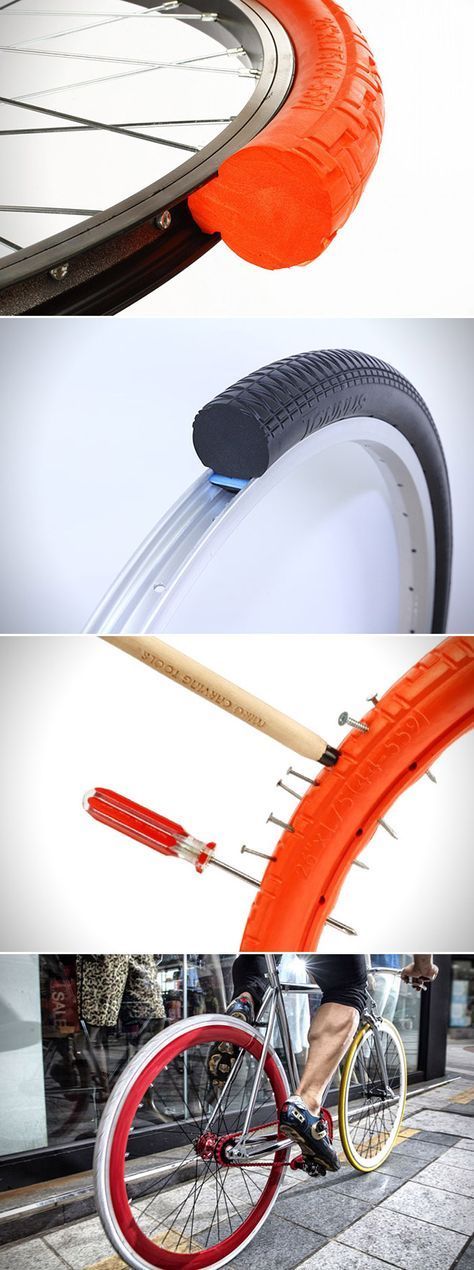 Don't worry about the nut coming off the end of the valve body because the threads are rounded to prevent this from happening.
Don't worry about the nut coming off the end of the valve body because the threads are rounded to prevent this from happening.
There seems to be a myth that Presta valves handle high pressures better - this is probably not true given that there are Schrader valves that can handle many hundreds of psi (much more than you'll ever need). in your tire).
However, Presta valves are definitely a bit more fragile than Schrader valves. It is very easy to strike the threaded inner body of the valve, bend it or break it, so care must be taken. However, valve cores are easily replaced with standard tools.
Compared to Schrader valves, this requires a special tool.
Presta valves can be supplied with a retaining ring that secures the valve body to the rim. This can make them easier to inflate. The dust cap is not essential to sealing it, but helps keep the valve clean.
The only other type of valve you may encounter is the Dunlop (also known as Woods) valve. The base diameter is the same as the Schrader valve but can be inflated with the same pump as the Presta valve.
The base diameter is the same as the Schrader valve but can be inflated with the same pump as the Presta valve.
They are very popular on city streets in Europe and elsewhere in the world, but you are unlikely to find one in the UK or the US.
The tubeless valve is difficult to distinguish from a normal Presta valve.
Valves for tubeless tires are attached directly to the rim, not part of the inner tube.
Most often they are of the Presta type, but there is also a Schrader.
If you have a Schrader type valve like the one shown above, the first thing you need to do is remove the dust cap (if there is one).
Simply unscrew the cap counterclockwise to open the valve.
Now attach the pump head.
Inflate the tire to between the minimum and maximum indicated on the tire sidewall and remove the pump. Ready!
Ready!
If your bike has a Presta type valve like this one, you will first need to remove the plastic valve cover (if any).
The plastic cover will open another threaded valve cover.
Loosen the threads, but be careful not to damage them in the process.
Now attach the pump head of your choice to the open valve and inflate the tire to between the minimum and maximum pressure indicated on the sidewall of the tire.
Inflate the tire to the desired pressure and remove the pump.
Finally, close the valve by turning it clockwise and install the plastic valve cover.
If you have a tubeless tire or a tube with sealant inside, there are a few extra steps you should take to avoid contaminating your pump.
Turn the wheels so that the valves are at the bottom and leave for a few minutes to allow the sealant to drain.
Turn the wheels so that the valves are up and inflate the tires. The same thing happens when the tires are deflated to prevent the sealant from splattering all over the place.
We would say that if you can only own one type of pump, get a foot pump for home use because it is efficient, fast and easy to use.
However, there is no doubt that having an extra mini-pump for the duration of the trip is very useful - otherwise you risk getting stuck on the side of the road in case of a puncture.
There is no limit to pump selection. Basically, they all do the same job, some of them look better than others.
From budget to outrageously expensive, you'll find something to suit your needs.
Mini pumps work but are much more difficult to use. Again, there are many options that will fit in your pocket. We prefer hose mini pumps because it reduces stress (and potential damage) on the valve.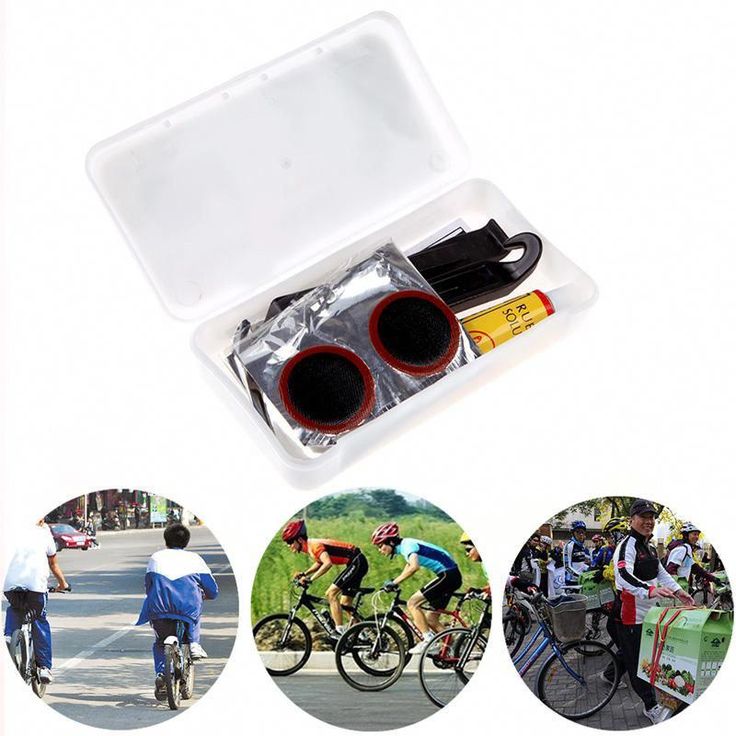
Another option for your inflation needs is the CO2 pump. They use compressed carbon dioxide in a small cartridge to inflate or fill a tire very quickly. Not something you would like to use on a regular basis, but perfect for emergency repairs.
The first thing to do is attach the pump to the valve.
Remove the valve cap, and regardless of valve type, we find it useful to let some air out to make sure the valve doesn't stick and opens and closes cleanly. Screw on the chuck, or push it in and lock it.
If your tire is completely flat, it may be difficult to install the cartridge at first because the valve tends to move back into the rim. Simply hold the valve at the back while pressing down on the outside of the tire so you can lock the cartridge in correctly.
The locking ring on Presta valves (if equipped) can also help by preventing the valve from dropping, holding it in place for you.
The connection to the valve must be tight. It is normal for a small amount of air to escape when installing the pump, but this should not last long. If so, remove and reinstall cartridge. If the problem persists, it might be worth checking the rubber seal in the chuck to make sure it's not worn out and needs to be replaced.
Remember to be careful with the valves - they are fragile. This is especially true if you are using a mini pump without a hose.
Be sure to secure the pump by hand to avoid applying too much force to the valve, which could cause damage.
When you start pumping, make sure you use the full stroke of the pump. You will find that most of the stroke is compressing the air to the point where it will be forced into the tire.
If you don't run the pump all the way, the air won't be forced out of the bottom - you need to pressurize to move the air from the pump to the tire. Instead, you'll just end up wasting your energy to no avail.
With a floor pump, don't just use your hands, use your body weight to push down and pumping becomes much easier.
Sometimes you may find that the pump does not hold pressure, especially when inflating a tire from a fully deflated position. This may especially apply to older pumps where the seals may be slightly worn.
We find that vigorous inflation first helps to create enough back pressure (i.e. tire side rebound) in the system to ensure that the valves actuate properly and seal the tire. Keep going until you get the right pressure.
When the cartridge is removed from the valve, a hiss of air loss can usually be heard. This usually happens on the pump side, not the valve side. The pressurized air from the hose and cartridge just comes out.
The pump pumps air into your tire. The principle of operation is simple; you increase the pressure inside the pump until it exceeds the pressure inside the tire.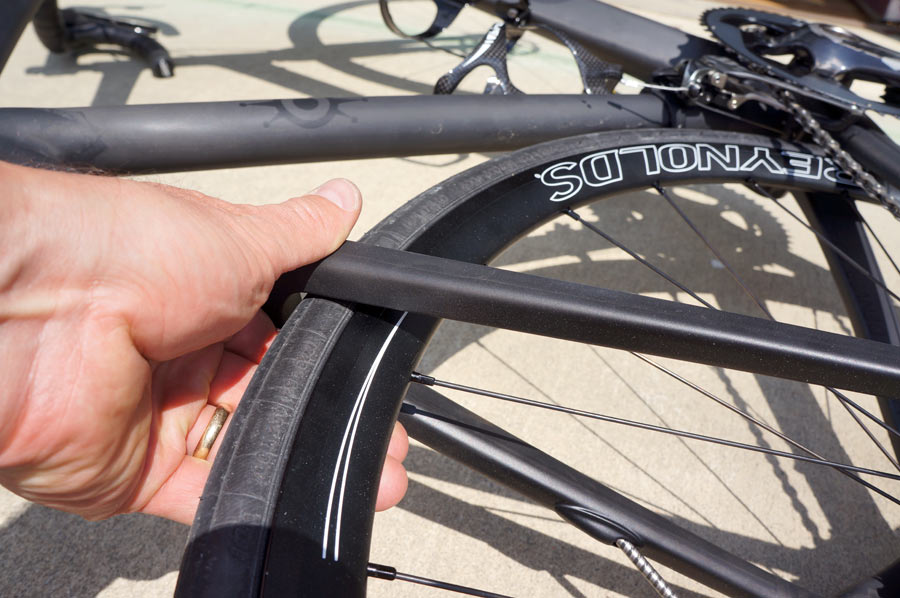 This "overpressure" forces air into the tire, which also increases tire pressure.
This "overpressure" forces air into the tire, which also increases tire pressure.
The pump is simply a manually operated piston. As the pump moves down, a check valve (allowing air flow in one direction) seals the piston chamber, causing the air pressure to rise as the pump is compressed. This pressure increases until it exceeds the pressure inside the tire.
At this point, the second one-way valve will allow air to flow from the pressure pump chamber into the tire. You extend the pump again, the check valve opens to fill the chamber with air, and you repeat the process.
To prevent leakage of tire pressure, the second check valve at the base of the pump closes. If it wasn't there, the pump would just open up again.
Presta valves close automatically, but spring-loaded Schrader valves are usually held open by a pin in the valve mount (meaning you don't need any additional inflation force to overcome the pressure exerted by the spring).
The pump head is also known as the cartridge.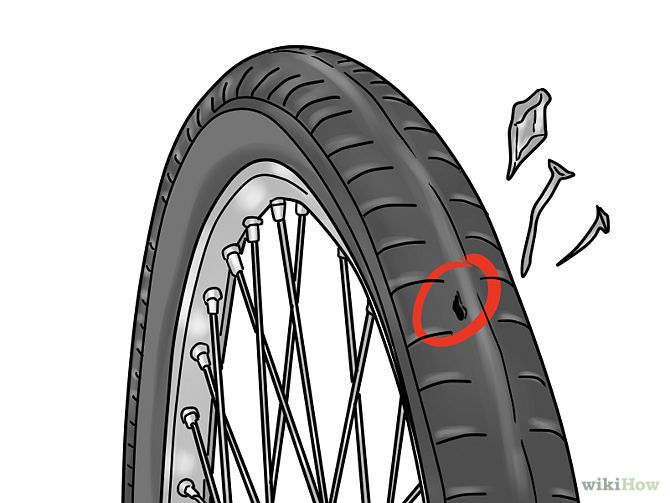
The cartridge is the part that attaches the pump to the valve and forms an airtight seal over the valve. There is one of two designs: threaded or push-on with a locking lever. Most pumps nowadays can also be adapted to Schrader or Presta valves.
They will either have two different mounting points or a cartridge that can be changed for both types.
For large pumps (and many mini pumps too) the cartridge is often on the hose, preventing your force from damaging the valve.
Pumps are often equipped with a tire pressure gauge.
Proper tire pressure is perhaps one of the most controversial topics, but there are a few guidelines you can follow.
As a rule of thumb, your tire should be strong enough to prevent it from flexing all the way to the rim, yet malleable enough to provide some suspension - after all, the beauty of a pneumatic tire is that you don't have an incredibly hard ride.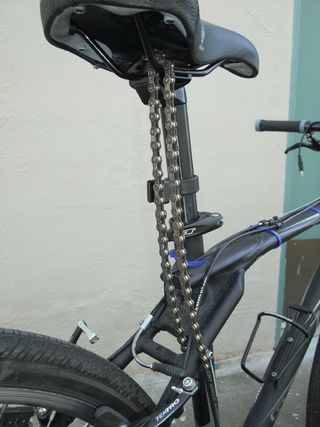
Most tires have a minimum and maximum pressure marked on the side. It is advisable not to go below or exceed these limits, because manufacturers have indicated them for a reason. Of course, this means there is still plenty of room to play around with the pressure and what works for you.
For mountain bikes, the problem is relatively easier to solve, as the goal is usually to improve traction, cornering, and damping.
As a rule of thumb, riders try to run as low pressure as possible without making it so soft that the tire squirms under load in a corner or flexes enough to damage the rim.
Things get a little more complicated for road bikes because along with grip and comfort, rolling resistance (how efficiently the tire rolls) is an important factor.
On all but the smoothest surfaces, a stiff tire will have no advantage, and instead of the tire being able to lean and conform to the bumps, causing the bike to move forward, you will bounce.
On all but the flattest surfaces, lower tire pressure can provide greater comfort and efficiency.
Testing showed that 20 percent tire compression (the amount of tire compression when a load is applied, measured by the height from the ground to the rim) was the optimal balance.
Incidentally, some manufacturers recommend the same level of tire compression, although this figure is somewhat controversial.
This value is indeed a good starting point for experimenting with tire pressures.
You don't always have to remove the pump/gauge to check tire pressure.
We recommend that you check your tires before every ride. Usually, you just need to squeeze them with your hand to check the pressure.
No, this is not very accurate, but you will quickly feel the pressure in your tires and be able to determine whether they need to be inflated or not.
If you get serious about this, you can end up with a pressure gauge that can read your tire pressure very accurately.
This is especially useful on mountain bikes where a few psi can make a big difference in handling and grip, but applies equally to a road bike to find the exact pressure that works for you.
You may be interested in:
Don't let a flat tire put you off your chosen path. Learn how to repair a tire in the field.
By Joey Nickisher, OFFGRIDWEB.COM
Translation and adaptation by Artyom Kostin, LASTDAY.CLUB
A few years ago, my colleagues and I conducted a search and rescue operation. We successfully found the "lost", but halfway out of the forest, we suddenly realized that the wheel of our SUV was punctured. Another transport for the evacuation of the victim was not suitable, and he needed medical assistance urgently. So I had to repair the tire in the field. Happened. The victim was taken to the hospital, and we were enriched by the experience of field repairs. But what would we do if we didn't have the right skills and tools? Do you have them?
But what would we do if we didn't have the right skills and tools? Do you have them?
Therefore, to begin with, let's talk about the simplest and most banal option for “repairing a tire” ...
Yes, some motorists are very lucky and they never had the need to change a flat tire on their own. Others were less fortunate, and they know perfectly well what kind of hemorrhoids it is to change a wheel right in the middle of the road. Worse, perhaps, only to do it in the middle of a dense forest. So, it is worth figuring out by experience how to do it yourself. No kidding, because at least in theory anyone can do it - “ It's business - to jack up, unscrew the nuts / bolts with a balloon, raise the car, remove the wheel, put the dock, tighten, lower, tighten ... ", but in practice it always begins" Where to put the jack? key?”, “How to unscrew the spare wheel?” etc.
It is better to study and practice in advance than to try to do something in an emergency with difficulty and obscenities. And after you learn how to do it yourself - be sure to teach this to your household and the people you regularly carry in your car - just in case.
And after you learn how to do it yourself - be sure to teach this to your household and the people you regularly carry in your car - just in case.
In addition to the relevant knowledge, you will also need tools. And, of course, the spare tire itself. Without him, you understand, it is difficult to do anything at all. So, it is worth figuring out where in your car it is stored. And is there any. Spare parts can be located in different places of the car - under the floor, under the seats, in a plastic casing at the back, in the trunk, suspended from the back with cables or mounts, etc.
The latter case is particularly difficult, as the fasteners can only be removed using the special tools supplied with the purchase. In addition, when working with them, you may need to study the instructions. And it is better to do this in a garage or a quiet environment, and not in the middle of a forest. It is also worth regularly checking the degree of inflation of the spare tire and pumping it up if the pressure is low.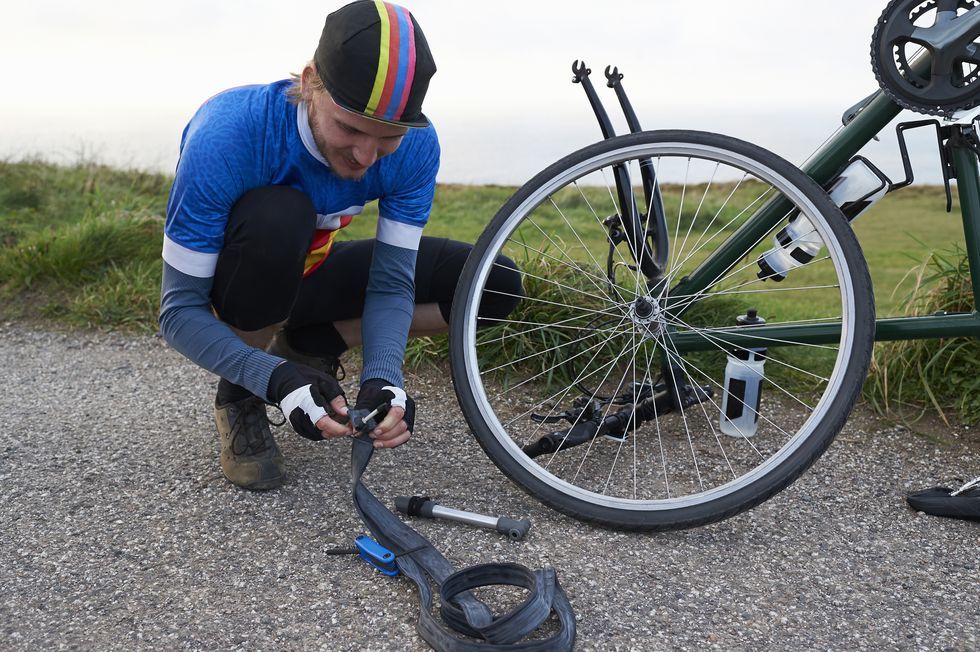 Keep in mind that many vehicles are shipped with flat tires or repair kits, rather than wheels that are ready to be installed.
Keep in mind that many vehicles are shipped with flat tires or repair kits, rather than wheels that are ready to be installed.
You will also need a jack to lift the car, a wheel wrench or other wrench that fits the nuts and bolts that hold the wheels. If all of the above is not present, then this is a sure path to disaster. Or - to a long and expensive wait for a tow truck.
The simple wheel replacement algorithm looks like this.
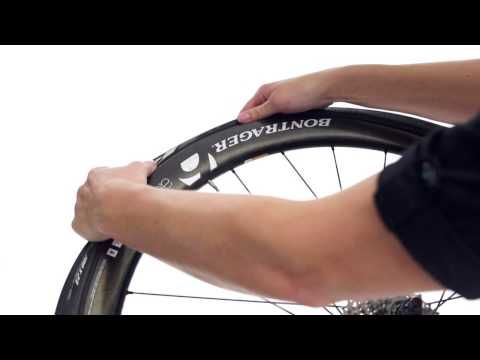
Read the vehicle manual before starting work. The fact is that on modern vehicles there are two main ways to fasten the wheel - using nuts or bolts. And it's better to know in advance.
A mechanical jack (left), which you will find in the trunk of almost every car, despite its not the most convenient principle of operation and small footprint, is an excellent choice for emergencies. The hydraulic jack (right) is compact and robust. Wider bases improve stability, but may be too high for vehicles with low ground clearance.Everything seems to be clear with this, right? But what if the wheel is not replaced?
The first thing to do is fill the flat tire with compressed air. If the leakage rate is low, then this is quite enough to reach the service center. Most often, air compressors powered by a 12-volt power source are used for this.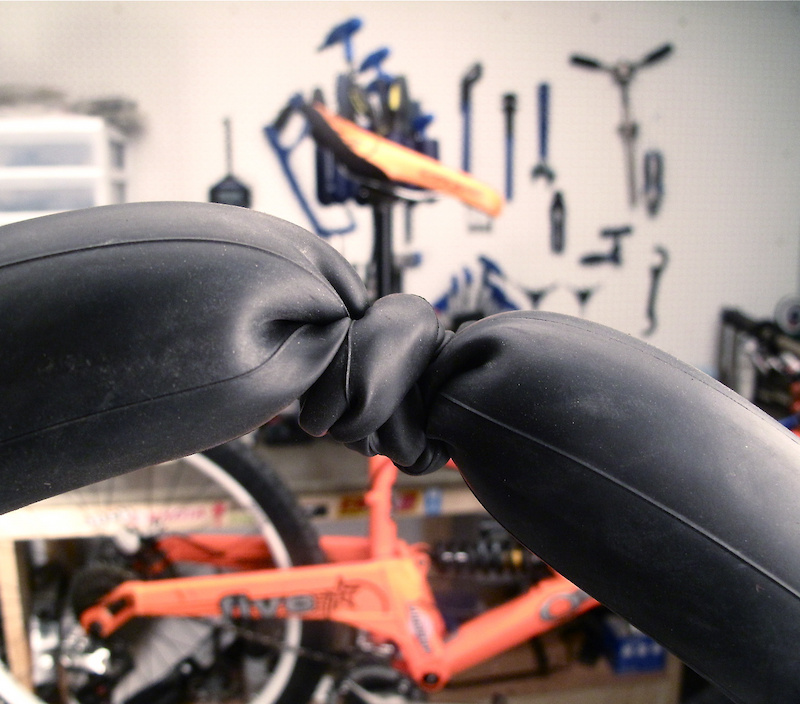 Or - compressed air cylinders of various sizes, ranging from simple CO2 cartridges, which may need several pieces per tire, to large portable cylinders. The most extreme case is a bicycle pump. It is hard, long and not rational if the air flows out faster than you replenish it. Therefore, if the damage is extensive, other methods of repair are needed.
Or - compressed air cylinders of various sizes, ranging from simple CO2 cartridges, which may need several pieces per tire, to large portable cylinders. The most extreme case is a bicycle pump. It is hard, long and not rational if the air flows out faster than you replenish it. Therefore, if the damage is extensive, other methods of repair are needed.
A variety of tools and accessories are available to help you repair your tire. U.S. Tire Manufacturers Association - U.S. Tire Manufacturers Association (USTMA), has developed its own criteria for such products. They are discussed in the text "Puncture Repair Procedures for Passenger and Light Truck Tires" - "Repair of tires for cars and light trucks." According to these recommendations, you can work with holes not larger than ¼ inch, which are located directly in the tread area (but not on its edge or on the side surface). Under normal circumstances, this standard should be maintained, but you may find yourself in a situation where even some tire repair can make the difference between life and death!
Under normal circumstances, this standard should be maintained, but you may find yourself in a situation where even some tire repair can make the difference between life and death!
So, the best tool for repairing a tire is “fungus”, a kind of cork with an internal patch. They are used at service stations. This repair involves widening the hole, plugging it in, applying an activator adhesive and a patch on the inside of the tire.
The average person can install a simple harness patch without removing the tires from the rim. First, locate the location of the damage. Then - remove the debris and the damaging element (nail, screw, etc.). Then, using a spiral awl - a tool that resembles a file or rasp, clean the walls of the hole. Then - install the tourniquet (strip of rubber) on the harness installation tool, (a tool with an eye that resembles a huge sewing needle). Apply glue to the hole and the patch cord, and then push it directly into the hole, leaving no more than a centimeter sticking out. Turn the plug tool and pull it out, leaving the patch in the hole. Wait a few minutes - let the glue grab. If the damage is not particularly serious, this should be enough. This tire repair has been practiced for quite a few years.
Turn the plug tool and pull it out, leaving the patch in the hole. Wait a few minutes - let the glue grab. If the damage is not particularly serious, this should be enough. This tire repair has been practiced for quite a few years.
Although this is not officially recommended, if the puncture is not sealed, then you can try to insert additional plugs into the hole. In addition, this method should not be used with a punctured side of the tire. However, I myself have seen similar patches on the side surfaces of the wheels of ATVs, tractors and SUVs. But only in really emergency situations. And if you find yourself in such a patch, then, of course, you will have to insert such a patch, but you will need to drive slowly - at the speed of a pedestrian. And only to the place where it will be possible to change the tire normally. This applies to both off-road and the roadway - otherwise the risk is too high that the plug will be knocked out by pressure.
There are many varieties of stoppers, plugs, patches and fungi, but I would single out Stop & Go International.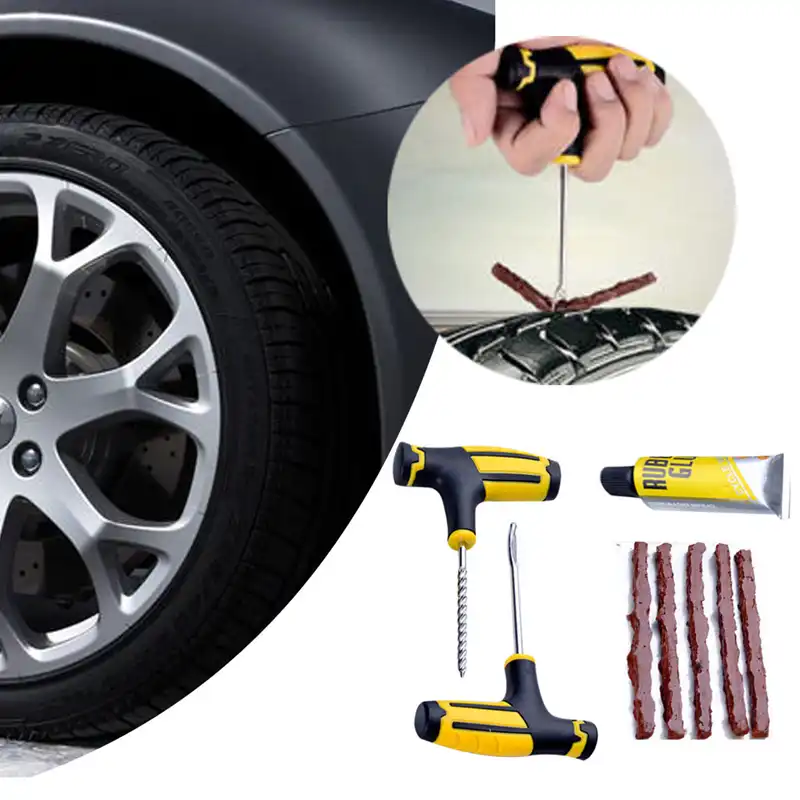 They work on the same principle as similar tire repair fungi, but offer a number of additional benefits:
They work on the same principle as similar tire repair fungi, but offer a number of additional benefits:
You may ask me, “Why use any plugs and fungus when you can seal a hole with Fix-a-Flat tire sealant?”. You can, of course, but this is far from the best and most successful option. Yes, sometimes it works, but it has significant drawbacks that interfere with normal use. Let's start with the fact that before the change in the formulation of Fix-a-Flat in 2016, the past mixture, according to the safety protocol of 10/15/2000, was corrosive. So older Fix-a-Flats have the potential to cause further tire damage and, in severe cases, serious wheel problems.
So older Fix-a-Flats have the potential to cause further tire damage and, in severe cases, serious wheel problems.
Therefore, this method is a quick but temporary solution to the problem. And the chemical sealant should be removed from the inside of the tire as soon as possible. And for this, many service stations charge an additional fee. What's more, even with the new formulation, the instructions still say to remove the mixture after 3 days or 100 miles. Otherwise, problems may begin.
Slime Tire Sealant (which is injected inside the wheel and closes the puncture), and more “traditional” tire repair kits.The old Fix-a-Flat formula contained tetrafluoroethane, heavy aromatic solvents, amorphous polyolefin, various aromatic resins, an inert filler, and a trade secret "proprietary" substance. The new formula contains tetrafluoro-1-propene, glycerin and cellulose. Just in case, check what is written on the can of sealant.
You may also have heard of Slime Tire Sealant, a thick green slurry that could be injected into the inside of a tire to repair minor damage and prevent further deflation.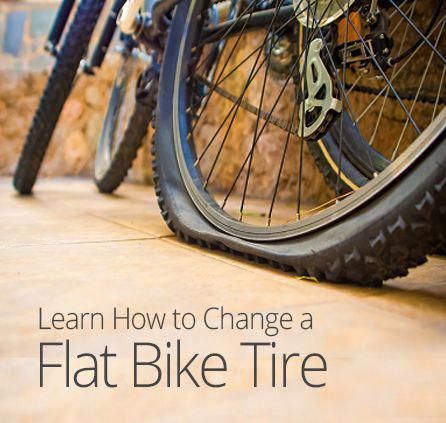 The manufacturer claims that this product is safe for TPMS (tire pressure monitoring system), contains rust inhibitors and lasts for several years. Based on my personal experience, it's true. Tires really last more than one year after such a repair. Plus, it is extremely easy to use - you need to pull the spool out of the valve (the valve through which the wheel is inflated), then - using a special tool, introduce the sealant into the tire. Slime contains glycerin, attapulgite, cellulose and quartz.
The manufacturer claims that this product is safe for TPMS (tire pressure monitoring system), contains rust inhibitors and lasts for several years. Based on my personal experience, it's true. Tires really last more than one year after such a repair. Plus, it is extremely easy to use - you need to pull the spool out of the valve (the valve through which the wheel is inflated), then - using a special tool, introduce the sealant into the tire. Slime contains glycerin, attapulgite, cellulose and quartz.
TireJect Sealant is similar to Slime - this liquid also needs to be injected into the chamber through a valve and is also effective for two years. But at the same time - much more liquid and is available in two versions. "Automotive Sealant" works on sidewall holes and projector punctures up to ¼" while remaining safe on tires, rims and pressure gauges. "Off-Road Sealant" works with holes up to 3/8 inch, which are also located on the side, and with tires that have already begun to rot and let air through purely due to age.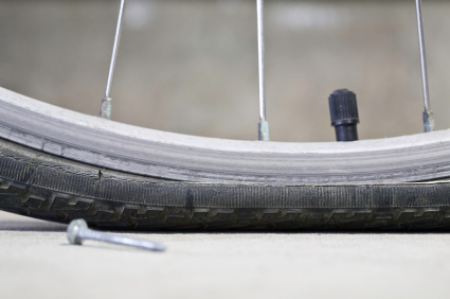 It is made from liquid rubber, sealing particles and armid (Kevlar) fiber. However, it is harmful to pressure sensors. Personally, I tried it on my old land aerator tires that didn't hold pressure for more than two days. It's been 30 days since using TireJect - and they still held air! The main ingredients are propylene glycol and natural rubber latex.
It is made from liquid rubber, sealing particles and armid (Kevlar) fiber. However, it is harmful to pressure sensors. Personally, I tried it on my old land aerator tires that didn't hold pressure for more than two days. It's been 30 days since using TireJect - and they still held air! The main ingredients are propylene glycol and natural rubber latex.
While researching, I came across another tire repair sealant called FlatOut Multi Seal. I haven't used it myself, but I feel it's worth a mention. Just like the two products mentioned above, this is a liquid that needs to be injected into the inside of the wheel through a valve. According to the manufacturer, this substance lasts for 10 years, but is only suitable for off-road tires, as it harms pressure sensors. Multi Seal Pro HD 2500 handles holes up to ¾" and Multi Seal Armor 3500 up to 1 ¼". Such holes, for example, leave bullets on impact. The chemical ingredients in the FlatOut Multi Seal are 50% Propylene Glycol and the rest are branded ingredients in low doses.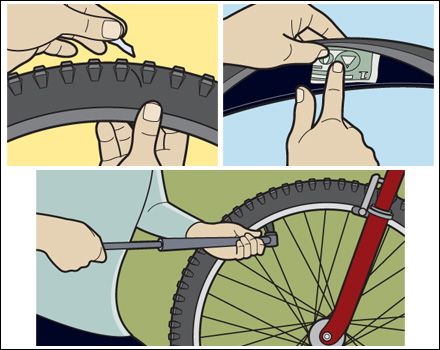
A friend of mine was riding a quad bike over rough terrain and blew a tire. The hole was too big for normal fixing methods, and there was no spare tire. What did he do? He sewed up the hole. That's right - he took a thick canvas needle and a thick nylon thread, put a bunch of seams on the hole, placed a patch on the tire from the inside, and then filled everything both outside and inside with activator glue. That was enough to get to the workshop.
In some Third World countries, damage is still being repaired with a torch and pieces of rubber that are melted directly onto the damaged areas.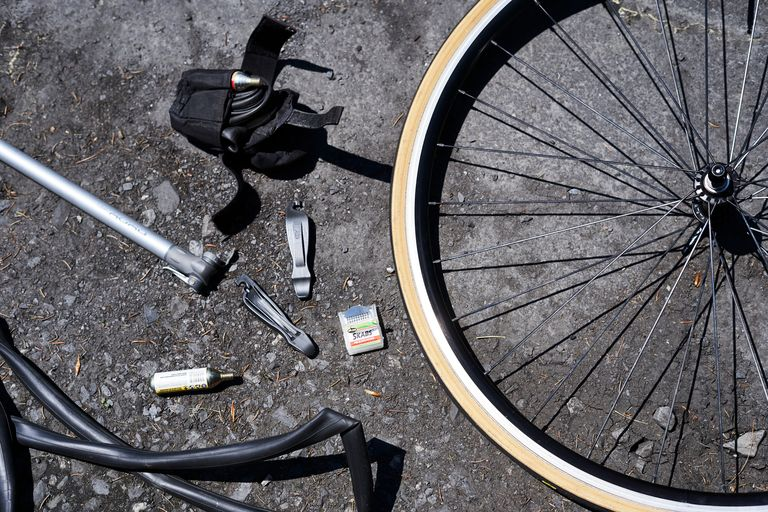 This, of course, requires very skillful hands, but a lot of tires have been repaired in this way. There is also the old "school trick" that allows you to put a flat tire back on the wheel - any flammable aerosol. You inject it in, ignite it, the gas expands, the tire straightens out and back onto the wheel. But we do not recommend that you use this method - it is quite dangerous, as the explosion can tear the rubber into pieces.
This, of course, requires very skillful hands, but a lot of tires have been repaired in this way. There is also the old "school trick" that allows you to put a flat tire back on the wheel - any flammable aerosol. You inject it in, ignite it, the gas expands, the tire straightens out and back onto the wheel. But we do not recommend that you use this method - it is quite dangerous, as the explosion can tear the rubber into pieces.
At the beginning of the article, I said that my comrades and I had to repair a tire during a rescue operation. Of course, we could install a patch or a fungus, but first we would need to find the damage, and then also spend time on repairs. We could have just changed a wheel, but no one had a spare at all.
We could take the tire off and put a new tube in it. But for this it would be necessary to find a wrench, a jack, lift everything, disassemble the wheel and replace the chamber.